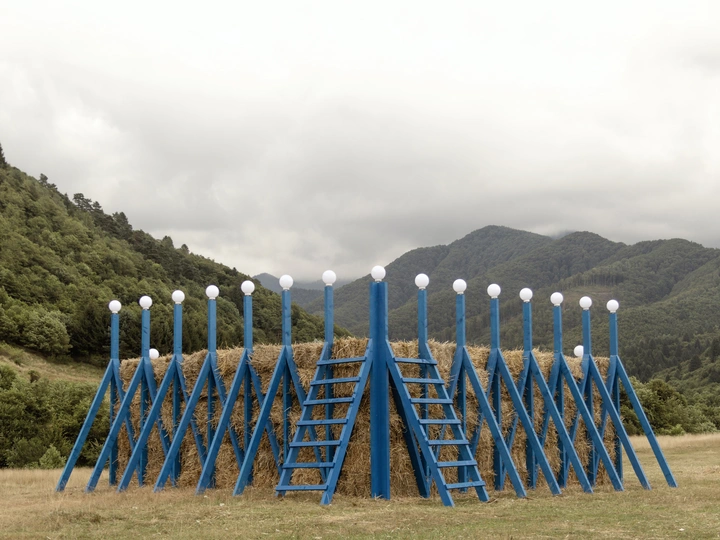Hay Bale Amphitheater

Oana Big
Sebastian Big
Zenaida Florea
Ioana Iacob
Hans Scherer
Zenaida Florea and Cristi Bădescu both graduated from the Ion Mincu University of Architecture and Urbanism in 2019 and have since followed individual yet complementary paths, contributing to a diverse range of architectural projects across scales and typologies. Zenaida is currently a Ph.D. candidate and teaching assistant at the Ion Mincu University, working with first-, second-, and third-year design studios. Her academic pursuits are enriched by practical experiences, including internships in Nanjing and Istanbul. Since graduation, she has been involved in a wide spectrum of projects, from large-scale architecture competitions to small-scale, more intimate interventions like exhibitions and temporary installations. Cristi, likewise a Ph.D. candidate and teaching assistant, focuses primarily on first-year design studios. After graduation, he joined the Bucharest-based architecture office POSTER, where he worked until recently. In 2021, Cristi, together with the POSTER collective, curated the Romanian Pavilion at the Venice Biennale with the project Fading Borders, which explored the socio-spatial effects of Romanian labor migration.
Together, Zenaida and Cristi operate at the intersection of civic initiatives, education, research, and architectural practice. They treat each project as an opportunity for critical inquiry and spatial experimentation, with a particular interest in temporary installations and exhibition formats. The FID - Football as Infrastructure for Democracy project, initiated by Casa Jakab Toffler and designed by Elena and Cristi, was nominated for the 2024 EU Prize for Contemporary Architecture, Mies van der Rohe Awards.
Their collaborative practice is named VRAC – meaning “in bulk” – a concept that embodies their methodology of collecting and working with raw, unsorted ideas: a flexible, layered approach to space, narrative, and participation.
The Hay Bale Amphitheater is a temporary installation resulting from an ideas competition organized by Foundation Conservation Carpathia during Făgăraș Fest 2024, in Sebeșu de Sus, Romania. Set in the natural landscape of the Făgăraș Mountains, the competition emphasized two main themes: the urgent need to protect this unique ecosystem and the importance of responsible design using local natural resources.
Placed slightly apart from the main festival, the installation acts as a subtle mediator between the event and its surroundings, an organic extension of the landscape. Oriented toward the mountains, it invites retreat and quiet observation. Over time, it evolved into a central point of the festival: a place for rest, gathering, play, and night-time conversations. Its two faces serve distinct purposes. The solid, double-sided façade acts as a visual and spatial threshold, offering shelter and a rhythmic presence. Inside, the structure unfolds into an amphitheater of hay bales facing the mountains, inviting slow, deliberate movement. Visitors could engage with it by climbing the outer wall via two corner staircases or ascending step by step through the haystack seating. Hay bales were used as modular, reusable elements forming the stepped amphitheater, supported by an outer and inner wooden frame built with locally sourced timber. At night, solar-powered spheres subtly illuminated the space.
We anticipated the hay would gradually scatter, leaving the enduring wooden structure intact. What surprised and delighted us most was how the installation was embraced and activated in ways beyond our original intentions. Though designed as a tranquil retreat, its strategic location made it a lively, essential hub for festival attendees. This positive response inspired the organizers to include similar interventions in future editions, which we are also invited to design and build.